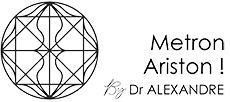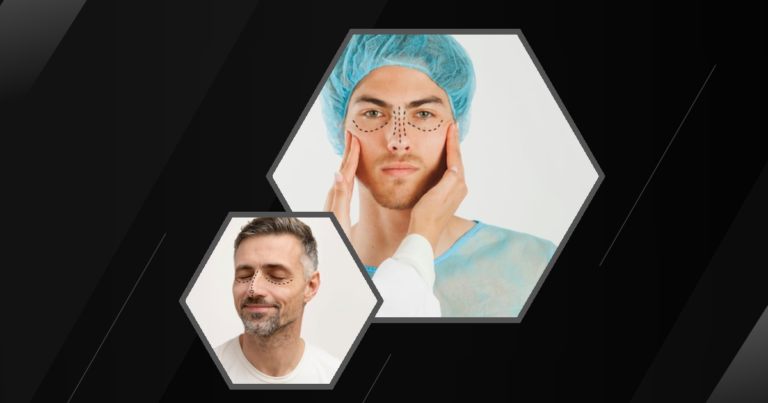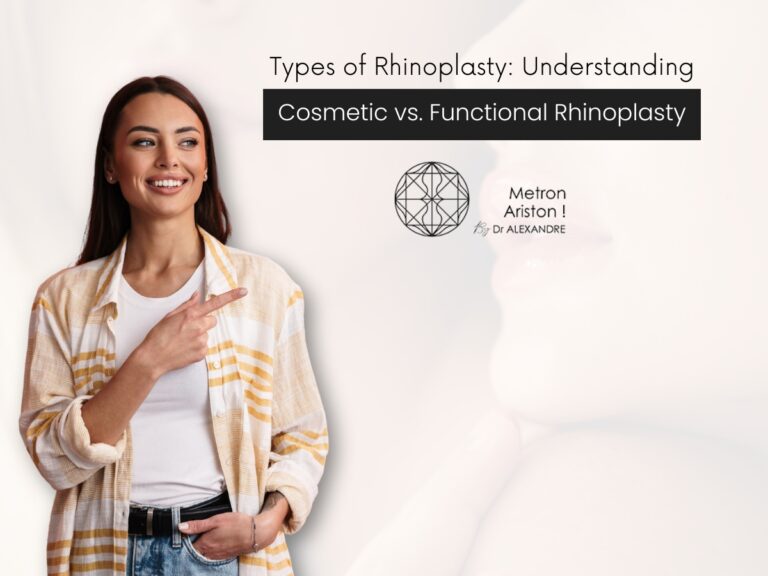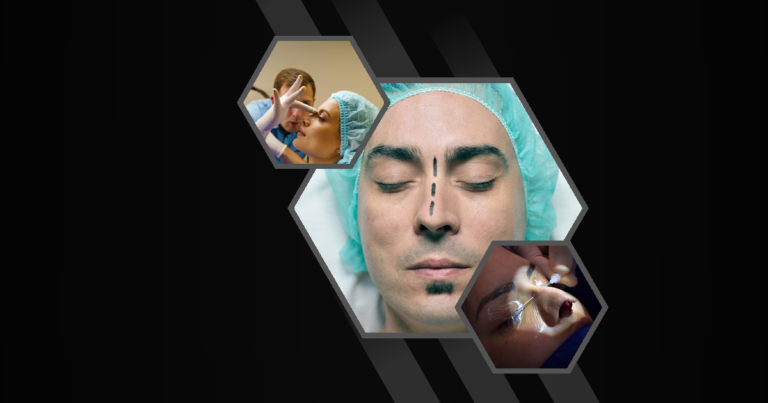What is Ultrasonic Rhinoplasty: A Revolutionary Approach to Nose Surgery
Ultrasonic rhinoplasty is a groundbreaking technique in the field of cosmetic surgery, offering a modern approach to nose reshaping. This innovative procedure utilizes advanced ultrasonic technology to enhance precision and minimize trauma, setting it apart from traditional methods.
In this article, we will explore the intricacies of ultrasonic rhinoplasty, its benefits, and how it compares to conventional techniques.
What is Ultrasonic Rhinoplasty?
Ultrasonic rhinoplasty is a surgical procedure that employs ultrasonic waves to reshape the nasal bones and cartilage. Unlike traditional rhinoplasty, which uses manual tools, this method allows for greater precision and control. The ultrasonic device gently sculpts the nose, reducing the risk of damage to surrounding tissues.
Nose Reshaping Dubai offers people a way to change how their nose looks and works doctors in dubai use special techniques to make noses smaller bigger or different shapes
- Utilizes ultrasonic waves for reshaping
- Offers enhanced precision and control
- Minimizes trauma to surrounding tissues
How Ultrasonic Technology Works in Rhinoplasty
The ultrasonic device emits high-frequency sound waves that selectively target bone and cartilage. This technology allows surgeons to sculpt the nose with unparalleled accuracy, reducing the likelihood of complications. The precision of ultrasonic rhinoplasty results in smoother contours and more refined outcomes.
- High-frequency sound waves target bone and cartilage
- Allows for precise sculpting
- Results in smoother and more refined outcomes
Benefits of Ultrasonic Rhinoplasty
Precision and Control
One of the primary advantages of ultrasonic rhinoplasty is the level of precision it offers. Surgeons can make minute adjustments with ease, ensuring that the final result aligns with the patient’s aesthetic goals. This precision reduces the need for revisions and enhances patient satisfaction.
- Enables minute adjustments
- Aligns with patient’s aesthetic goals
- Reduces need for revisions
Reduced Trauma and Faster Recovery
Ultrasonic rhinoplasty is less invasive than traditional methods, leading to reduced trauma and faster recovery times. The ultrasonic device minimizes damage to soft tissues, resulting in less swelling and bruising. Patients can return to their daily activities sooner, making this procedure an attractive option for many.
- Less invasive than traditional methods
- Minimizes damage to soft tissues
- Results in faster recovery times
Improved Aesthetic Outcomes
The precision of ultrasonic rhinoplasty often leads to superior aesthetic outcomes. Patients report more natural-looking results, with smoother nasal contours and improved symmetry. This technique allows for a more tailored approach, catering to the unique needs of each individual.
- Superior aesthetic outcomes
- More natural-looking results
- Allows for a tailored approach
Ultrasonic vs Traditional Rhinoplasty Techniques
Key Differences in Surgical Approach
The primary difference between ultrasonic and traditional rhinoplasty lies in the tools used. Traditional rhinoplasty relies on manual instruments, while ultrasonic rhinoplasty uses advanced technology for enhanced precision. This difference in approach results in varying levels of trauma and recovery times.
- Traditional uses manual instruments
- Ultrasonic uses advanced technology
- Varying levels of trauma and recovery
Comparison of Results and Recovery Time
Patients undergoing ultrasonic rhinoplasty often experience quicker recovery times and less postoperative discomfort. The precision of the ultrasonic device leads to more predictable results, reducing the need for additional procedures. In contrast, traditional rhinoplasty may involve longer recovery periods and a higher risk of complications.
|
Aspect |
Ultrasonic Rhinoplasty |
Traditional Rhinoplasty |
|
Precision |
High |
Moderate |
|
Recovery Time |
Shorter |
Longer |
|
Risk of Complications |
Lower |
Higher |
Candidates for Ultrasonic Rhinoplasty
Ideal Patient Profile
Ideal candidates for ultrasonic rhinoplasty are individuals seeking to improve the appearance of their nose with minimal downtime. This procedure is suitable for those with realistic expectations and a desire for natural-looking results. Patients should be in good overall health and free from conditions that may impair healing.
- Seeking minimal downtime
- Desire for natural-looking results
- Good overall health
Medical Considerations
Before undergoing ultrasonic rhinoplasty, patients should discuss their medical history with their surgeon. Certain conditions, such as bleeding disorders or autoimmune diseases, may affect the procedure’s safety and outcomes. A thorough evaluation ensures that the patient is a suitable candidate for this advanced technique.
- Discuss medical history with surgeon
- Consider conditions affecting safety
- Ensure suitability for the procedure
The Ultrasonic Rhinoplasty Procedure
Pre-operative Preparation
Preparation for ultrasonic rhinoplasty involves a comprehensive consultation with the surgeon. Patients should discuss their goals and expectations, as well as any medical concerns. Pre-operative instructions may include avoiding certain medications and refraining from smoking to promote optimal healing.
- Comprehensive consultation with surgeon
- Discuss goals and expectations
- Follow pre-operative instructions
Step-by-Step Surgical Process
The ultrasonic rhinoplasty procedure begins with anesthesia to ensure patient comfort. The surgeon then uses the ultrasonic device to sculpt the nasal bones and cartilage with precision. The procedure typically takes a few hours, depending on the complexity of the case.
- Anesthesia for patient comfort
- Use of ultrasonic device for sculpting
- Duration depends on case complexity
Post-operative Care
Post-operative care is crucial for a successful recovery. Patients should follow their surgeon’s instructions, which may include using cold compresses to reduce swelling and avoiding strenuous activities. Regular follow-up appointments ensure that the healing process is on track.
- Follow surgeon’s instructions
- Use cold compresses to reduce swelling
- Attend regular follow-up appointments
Recovery and Results from Ultrasonic Rhinoplasty
Typical Recovery Timeline
Recovery from ultrasonic rhinoplasty is generally quicker than traditional methods. Most patients can return to work within a week, although full recovery may take several months. Swelling and bruising typically subside within a few weeks, revealing the final results.
- Quicker recovery than traditional methods
- Return to work within a week
- Full recovery may take several months
Long-term Outcomes and Patient Satisfaction
Long-term outcomes of ultrasonic rhinoplasty are often highly satisfactory, with patients enjoying improved nasal aesthetics and function. The precision of the procedure leads to lasting results, and many patients report increased confidence and self-esteem.
- Highly satisfactory long-term outcomes
- Improved nasal aesthetics and function
- Increased confidence and self-esteem
Risks and Potential Complications
Common Side Effects
As with any surgical procedure, ultrasonic rhinoplasty carries some risks. Common side effects include swelling, bruising, and temporary numbness. These effects are typically mild and resolve on their own within a few weeks.
- Swelling and bruising
- Temporary numbness
- Typically mild and self-resolving
Rare but Serious Complications
While rare, serious complications can occur with ultrasonic rhinoplasty. These may include infection, bleeding, or adverse reactions to anesthesia. Choosing a qualified and experienced surgeon can significantly reduce the risk of such complications.
- Infection or bleeding
- Adverse reactions to anesthesia
- Reduced risk with qualified surgeon
Choosing a Surgeon for Ultrasonic Rhinoplasty
Qualifications to Look For
Selecting the right surgeon is crucial for a successful ultrasonic rhinoplasty. Patients should seek a board-certified plastic surgeon with extensive experience in ultrasonic techniques. Reviewing before-and-after photos and patient testimonials can provide insight into the surgeon’s skill and expertise.
- Board-certified plastic surgeon
- Extensive experience in ultrasonic techniques
- Review before-and-after photos
Questions to Ask During Consultation
During the consultation, patients should ask about the surgeon’s experience with ultrasonic rhinoplasty and their approach to the procedure. Inquiring about potential risks, recovery time, and expected outcomes can help patients make informed decisions.
- Experience with ultrasonic rhinoplasty
- Approach to the procedure
- Potential risks and recovery time
Advancements in Ultrasonic Rhinoplasty Technology
Latest Innovations
Recent advancements in ultrasonic rhinoplasty technology have further enhanced the precision and safety of the procedure. Innovations such as improved ultrasonic devices and techniques continue to refine the outcomes, offering patients even better results.
- Enhanced precision and safety
- Improved ultrasonic devices
- Refined outcomes
Future Prospects
The future of ultrasonic rhinoplasty looks promising, with ongoing research and development aimed at further improving the procedure. As technology advances, patients can expect even more refined results and shorter recovery times.
- Promising future prospects
- Ongoing research and development
- More refined results and shorter recovery
FAQs
Is ultrasonic rhinoplasty more expensive?
Ultrasonic rhinoplasty can be more expensive than traditional methods due to the advanced technology and expertise required. However, many patients find the benefits, such as reduced recovery time and improved outcomes, to be worth the investment. It’s important to discuss costs with your surgeon during the consultation.
Can ultrasonic rhinoplasty be performed as a closed procedure?
Yes, ultrasonic rhinoplasty can be performed as a closed procedure, which involves making incisions inside the nostrils. This approach minimizes visible scarring and can lead to a quicker recovery. However, the suitability of a closed procedure depends on the individual case and should be discussed with your surgeon.
How long does swelling last after ultrasonic rhinoplasty?
Swelling after ultrasonic rhinoplasty typically lasts for a few weeks, with the majority subsiding within the first two weeks. However, minor swelling can persist for several months as the nose continues to heal. Following your surgeon’s post-operative care instructions can help reduce swelling and promote healing.








